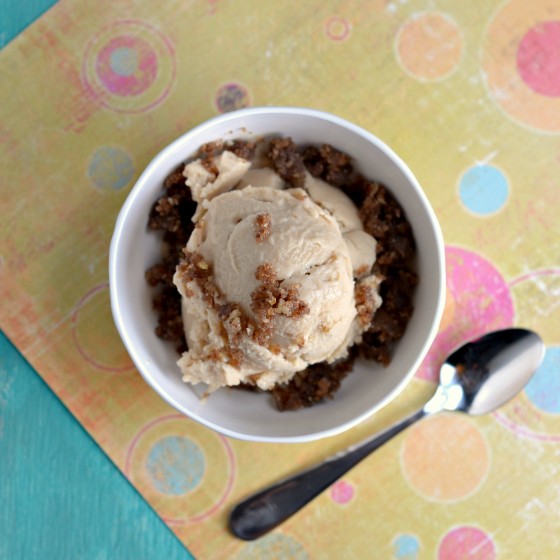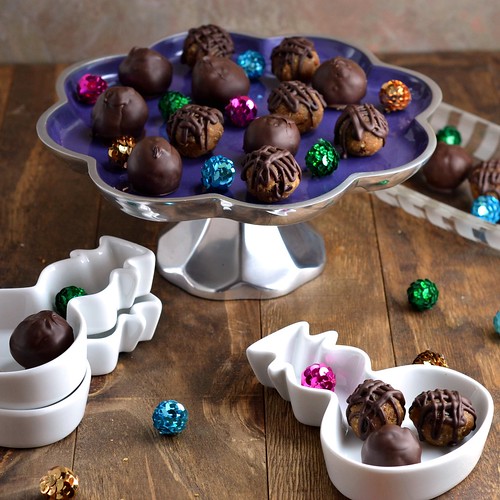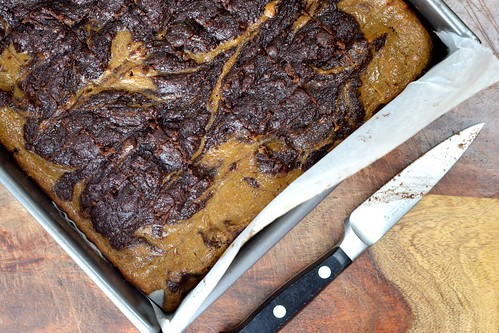Healthier Food Options: Natural Sweeteners for Your Desserts
Written on February 6, 2012 at 9:30 am, by Eric Cressey
We’re officially one month into 2012 and I suspect there are some people out there feeling a little deprived. Undoubtedly, you’ve been so good about your diet to kickstart the new year. And without a question, those sweet cravings are starting to nag you (and I bet that has nothing to do with all the pink-and-red-packaged chocolate currently taking over store shelves everywhere.) While I won’t argue with a true indulgence here and there, my sweet tooth requires a bit more than the occasional treat. Fortunately, I’ve developed a handy repertoire of sweet treats that fit in with a clean eating diet.
What exactly is clean eating? One might consider it a detox for life. Cleaning up your diet from processed, unhealthy foods to heal your body and your mind. Focusing on colorful veggies, whole grains, lean proteins, and healthy fats to satisfy your cravings and fuel your daily activities. Trying to eat more ingredients instead of things that have ingredients.
Clean eating is not eating sugar. Specifically, refined sugar (common granulated white sugar and brown sugar) is a big no-no. Same for the artificial alternative. The problem is that both of these are hidden almost everywhere. So what’s a guy or gal with a sweet tooth on a clean eating diet to do?

Easy-to-find, more nutritious and all-natural sweeteners include honey, maple syrup, and molasses. Other options becoming increasingly more mainstream are succanat (also referred to as evaporated cane juice) and coconut palm sugar. These sweeteners all have caloric value comparable to “regular” sugar but are less processed and retain higher nutritional value. Each has its pros and cons, including flavor and ease of use, which will help determine which one should be used in place of sugar in a specific recipe. Also becoming increasingly popular is stevia, a zero-calorie all-natural sweetener derived from the stevia plant. In its pure form, stevia is many times sweeter than sugar (1 teaspoon is equivalent to 1 cup of sugar in terms of sweetness) which makes it difficult to use a direct replacement in baking, but not impossible. Stevia is sold in various forms, including concentrated liquid drops (great for sweetening coffee and tea) and bulkier mixes (easier to use in baking or for measuring small amounts.)
Over the past year I’ve been experimenting with these various sweeteners and put them to use in many recipes. In general I find that these sweeteners work best in combination; I rarely use just one in a recipe. Here are some of my favorite all-naturally sweetened indulgences.

In this Salted Caramel Ice Cream, I started with coconut palm sugar to provide the rich color and caramel flavor. I could have used only coconut sugar to sweeten the ice cream, but to shave some calories, I opted to use about half of what I would have needed to create an adequately sweet ice cream, and added liquid vanilla stevia to provide the rest. (If you just clicked that link and dropped your jaw at the price of a 2oz bottle, relax. It seems like a lot of money but I promise it lasts forever. This stuff is highly concentrated and you only need a few drops to sweeten a cup of coffee or tea.) to provide the rest. (If you just clicked that link and dropped your jaw at the price of a 2oz bottle, relax. It seems like a lot of money but I promise it lasts forever. This stuff is highly concentrated and you only need a few drops to sweeten a cup of coffee or tea.)

Similarly, in these Mint-Cacao Cookie Dough Truffles, I used a combination of powdered stevia along with maple syrup. In this no-bake recipe, the maple syrup is desirable because it helps to bind the dry ingredients. But just like with the ice cream recipe, I opted to lighten the caloric load by using some stevia in addition. along with maple syrup. In this no-bake recipe, the maple syrup is desirable because it helps to bind the dry ingredients. But just like with the ice cream recipe, I opted to lighten the caloric load by using some stevia in addition.

Now take a look at my Pumpkin Spice Cheesecake Swirl Brownies (that are not only refined sugar-free, but vegan and gluten-free too!) Here I used a combination of maple syrup and another sweetener I didn’t even mention above: dates! Date puree (made from soaking dates in hot water and then pureeing in a food processor) provides not only sweetness and obvious nutrition, but contributes to the soft, chewy texture desirable in brownies and cookies. Also note that instead of oil, I used a combination of applesauce and pumpkin to provide the necessary moisture. These natural fruit and vegetable options provide some sweetness too. Decadently rich and fudgy, these brownies are some of my favorite baked goods to date (no pun intended.)

Lastly, here is an example where stevia did work perfectly well on its own. That chocolate-covered dream you see is a a Chocolate Raspberry Macaroon Tart I created for Clean Eating Magazine. There you have it: another resource to support your new clean eating lifestyle, and one to which I’m proud to be a regular contributor. I served this tart at a big family party last spring, and the only complaint was that I didn’t bring a second one as well.
I hope that with these ideas, you’re able to stay on track and feel good about what you’re eating!
About the Author
Cara Lyons is the author of Cara’s Cravings, a food blog dedicated to delicious recipes for healthy living. She is also a regular contributor to Clean Eating Magazine.
Sign-up Today for our FREE Newsletter and receive a four-part video series on how to deadlift!
|
















February 6th, 2012 at 4:02 pm
I will happily vouch that Stevia is massively sweeter than sugar.
i bought 500g of it years ago, and still have over half left!
It also has quite an acquired taste and ain’t great for sugar replacement when you are also using it for bulk in recipes. But I use it regularly to sweeten my protein shakes, and it does this job pretty well, especially now I’ve got used to the taste…
Good post, keep up the good work,
George Super Boot Camps
February 6th, 2012 at 9:42 pm
Good tips and information that I will pass along to my team! I totally agree the liquid stevia will last for a LONG time. Totally worth it. It works great to sweeten your coffee or tea as well!
February 7th, 2012 at 10:22 am
What about xylitol? You can use it to bake, and it does not have the after taste that stevia does . It also prevents bacteria in your mouth, it is now being used in many gums for that very reason.
February 7th, 2012 at 11:38 am
Stevia comes in two forms: brown liquid and white powder with different tastes. I strongly prefer the taste of the white powder, though it may be worth trying both to see which works best for you.
Sugar alcohols e.g. xylitol are fine except for laxative effect. Truvia is sold in stores and is stevia + erythritol which is a sugar alcohol like xylitol except it is supposed to be free of laxative effects of xylitol.
February 7th, 2012 at 12:36 pm
I’m very surprised to see a fitness nutritionist suggest honey as a “Clean” alternative to sugar.
Honey is almost 50% fructose. As most nutritionists should know – Fructose is not efficiently converted to energy. It will raise the insulin levels in the liver, without going through glycolysis, thus affecting insulin resistance. Honey is treated by your body no different then HCFS, and is made up of almost the same molecules, natural or not.
That being said, Molases and Maple Syrup are much better choices if you really want to go “All-natural”
I’m even surprised to see the “all-natural” fallacy being used on this blog. “all-natural” doesn’t necessary mean better. A sweetener like dextrose might be made in the lab – but your body can use it much better and more efficiently then almost any “natural” sugar
February 7th, 2012 at 9:01 pm
I’m with Dan – I really wish we could get away from the term “natural”. “Natural” the way it’s used here effectively has no meaning, and certainly doesn’t indicate that something is necessarily healthier for you. The health effects of sucralose and aspartame have been far more extensively studied than the long-term health effects of stevia.
February 8th, 2012 at 2:04 am
Opinions are like horse hockey, it’s all over the place. I would appreciate that when a person presents something as fact that he either tell the source of his information or tell his credentials. If it’s offered as opinion than everyone certainly has the right to his own. E.g. Stevia powder, Truvia, I don’t like the taste of it at all although sometimes if it’s hidden among other flavors it’s not bad but in coffee or tea, I’d rather take it straight. And, if it’s to be used in a recipe I’d try it out first before I gave it to guests.
February 8th, 2012 at 2:14 am
Lastly, in my opinion, if you’re going to have a dessert once in a while then have it. What’s all this about jumping through hoops mixing different sweeteners to mask the flavor of others. I think that for the most part sugar is sugar, just eat it rarely. Really, when I want to make a treat, I go with the traditional recipes from the French, Italians, Greeks, etc. Just eat less and eat it on treat days unless you’re a baker or food scientist who can be bothered with all this? Basta…
February 8th, 2012 at 6:00 am
Rather than using honey, syrups, agave that have been process in a factory use things like dates, coconut (the actual nut) blueberries, blackberries to sweet your dessert. Why people always think of a dessert has to be a cake, tart or an ice cream.. Thinking outside the box helps sometimes.. Get a coconut, crack it using your grip take the meat with your fingers (it is hard by the way) get some dates and couple of nuts mix it in a blender and Listo! There you have it an awesome dessert! It might be natural or not (I dont particularly care what terminology you want to use)but for sure non of the ingredients have visited the machinery in a factory! Enjoy it!
February 8th, 2012 at 8:35 am
Eugene,
The only qualification required to prove my statements is a grade 12 education, with courses in chemistry.
If you need a source, search Wikepedia or any science book for the word “Fructose”.
http://en.wikipedia.org/wiki/Fructose
And here’s the MULTIPLE sources on aspartame.
http://www.snopes.com/medical/toxins/aspartame.asp. As for other artificial sweeteners – there have been no studies yet to prove damage. The only thing the natural movement has on it, is that it’s ‘not natural’.
Now, as for your comment “Just have it”. That’s not an option for everybody. For me, and you – sure,I don’t mind. Try to tell a body builder who’s 3 weeks out from stage, and has been running a ketosis diet that he can “just have that piece of bakalava”.
February 10th, 2012 at 6:41 pm
Table sugar and honey have the same caloric value. Both also mostly consist of simple carbohydrates.
Therefore, while honey provides you with some vitamins and trace elements, using the same amount of it as you would use of sugar will bring you the same amount of calories.
February 13th, 2012 at 10:30 am
Thanks Cara. As a guy, I’m never going to bake any of this stuff. As a guy with a sweet tooth (right next to my fat tooth) Holy Smokes, that stuff looks great!! Thanks.
February 17th, 2012 at 7:36 am
Totally agree with Fernando here. Great recommendation too!
As for the word “natural”, it of course gets thrown around and misused so companies can sell more products, but the discoveries in nutrition science over the past decade have shown pretty clearly that the more “natural” a food is (in the true sense), the better it is for you. Phytonutrients and their complex interactions, which mainly only take place in natural food form, for example.
And that’s the case with honey, so I back up Cara (and Eric) on the suggestion of using it. I know about the fructose issues, but I think the cons are outweighed in the case of honey, when used in moderation.
In fact, Mark Sisson just posted a pretty good article about whether using honey is a good decision. Here it is: http://bit.ly/Ak6n9S